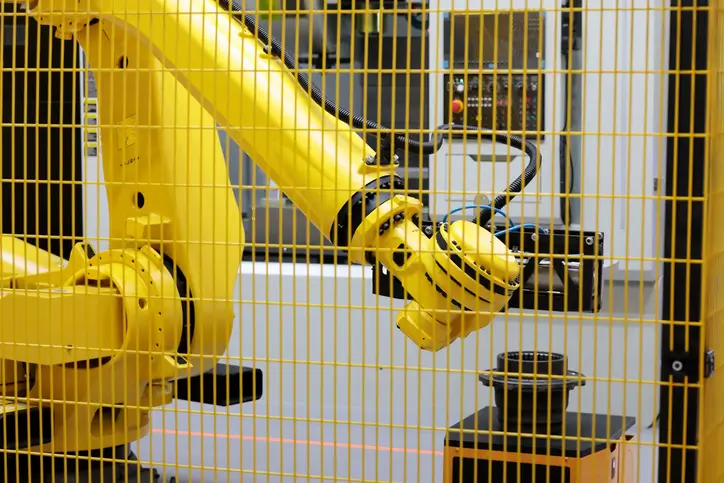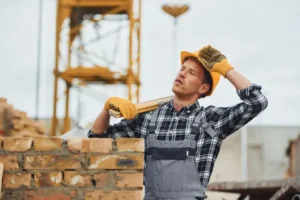Improper handling of heavy machinery leads to serious accidents and life-threatening incidents at workplaces. To combat hazardous situations, companies follow machine guarding policies. It refers to taking safety measures that are designed to safeguard workers from hazardous machinery and their parts. It helps keep operators and workers safe from amputations, crushes, burns, and cuts. The policies emphasize the use of physical barriers, devices, or automated controls to prevent contact with moving parts, sparks, or flying debris.
Purpose of Machine Guarding:
Machine Guarding helps prevent workplace injuries, reducing the risks of accidents that are caused by shearing, rotating, and cutting machine components. Moreover, it enhances overall productivity, which minimizes downtime caused by injuries or damaged machinery.
The Need to Have Machine Guarding Policies
Improper use of machines is among the top OSHA violations each year, leading to thousands of preventable injuries and accidents. According to the U.S. Bureau of Labor Statistics (BLS), machinery-related injuries account for a significant portion of workplace accidents, with over 18,000 injuries and 800 fatalities reported annually. The most common injuries include crushed hands and amputations that leave a lifetime disability among workers.
This causes a serious blow to the career opportunities of workers’ productivity, and the credibility of an organization. OSHA enforces strict machine guarding standards under 29 CFR 1910.212, which require employers to install proper guarding systems on hazardous machinery. The role of OSHA extends to providing proper training to workers to operate and handle critical machines and their components while advising organizations to follow proper safety rules.
Types of Machine Guards
There are four main types of machine guarding, which are as follows:
-
Fixed Guarding:
Fixed guarding is a permanent barrier that is attached to machines, preventing direct contact of workers with the hazardous parts. They are durable, reliable, and require minimal maintenance, but they do not allow easy access for machine adjustments or maintenance without removal. Commonly used on saws, presses, and conveyor belts.
-
Interlock Guards:
They are designed with a safety mechanism that operates when the guard is removed or opened. It helps prevent workers from accessing dangerous moving parts when the machine is running.
-
Adjustable Guards:
They provide flexibility by allowing operators to adjust the position of the guard based on the size and shape of the material being processed.
-
Self-Adjustable Guards:
These adjustable guards automatically move and adjust to accommodate the material as it is fed into the machine. This ensures continuous protection. They are commonly used in table saws, woodworking machines, and cutting equipment.
Best Practices for Effective Machine Guarding
To avoid experiencing penalties and serious workplace injuries, organizations need to follow the best practices mentioned below for effective machine guarding. Read on:
-
Risk Assessment:
Employers need to carry out a detailed risk assessment to check and monitor the working conditions and practices involving critical machines. They need to know the possible hazards associated with the machines to choose the right guarding for the prevention of injuries.
-
Accurate Installation:
Once they are successful in identifying the hazard, they need to pick the right guard and install it properly. Double-check if everything is properly secured and if the working conditions are safe from causing injuries.
-
Regular Maintenance:
Organizations should make sure that each guard and machine is regularly checked and maintained. It’s very important to check the working conditions and every individual component. Sometimes rust and loose nuts can cause huge problems. The heavy machinery used in the construction and manufacturing industries is prone to causing serious hazardous situations.
-
Training and Guidance:
Organizations need to offer proper training to employees and workers. They need to have a proper understanding of how to use a machine and what measures to take in case of encountering malfunctions.
Common Machine Guarding Violations and How to Avoid Them
Machine guarding is one of the top violations cited by OSHA. Over the years, more than 18000 injuries have been reported. Here are some common reasons why organizations encounter machine-related incidents.
Improperly Installed or Missing Guards
Improper installation or missing guarding causes serious incidents at workplaces. Either the guarding is removed, damaged, or never installed, which accounts for workers facing lifelong disabilities. It causes injuries resulting in amputation and crushing accidents.
Guards That Hinder Visibility or Operational Efficiency
Due to a lack of proper maintenance, employers remain oblivious to the impending hazards. As a result, some workers may tamper with or remove guards to make their tasks easier, putting themselves at risk.
Failure to Use Proper PPE Along with Guarding Systems
It’s important for workers to have proper PPE – personal protective equipment, as machine guarding alone can not prevent accidents. Gloves, face shields, and other hearing protection save workers from hazards related to explosions.
Lack of Employee Training on Safety Measures
Lack of training is one of the most common causes of accidents. Even if there are guards, employers fail to operate machines effectively. In case of emergencies, workers are not aware of the emergency protocols to follow.
OSHA Compliance and Legal Requirements Related To Machine Guarding
OSHA’s 29 CFR 1910.212 mandates that all hazardous machine parts must be properly guarded to protect workers from injuries. Organizations that fail to adhere to OSHA standards may face fines exceeding $15,000 per violation, increased workplace injuries, and potential legal liabilities. It’s important to conduct regular safety audits, train employees on proper machine usage, and implement engineered safety controls to prevent accidents. Its every employee and worker’s right to have a safe working space. Hence, for the safety of the workforce, organizations need to maintain a properly monitored workplace that is in compliance with safety standards.
Conclusion
Machine guarding is one serious problem that accounts for countless life-long disabilities among workers. It can be prevented if organizations take the necessary steps to combat hazards. With OSHA policies in place, it’s easier for industries to build a safe workplace for their employees while giving them proper training to handle and perform machine-related tasks.




